What is a Relationship Map?
Lesson Overview
In this lesson I will address five questions pertaining to a relationship map:
- What is it?
- Why is it used?
- How does it help?
- When is it used?
- Who should use it?
To better understand a relationship map, let’s look into each of these questions.
What is it?
A relationship map is a visual diagram that allows you to see a broad view of connections between business entities. A relationship map presents an illustration of who plays a role in the business processes and operations, and helps you gain a high-level understanding of which roles interact and why.
Alternative names for a relationship map include Business Interaction Model, Entity Relationship Diagram (ERD), Organizational Context Diagram, and Organizational Relationship Map.
In the context of use intended in this course, an entity represents a person or thing that physically exists. Therefore, an entity is thought of as a noun. Examples of entities are:
- user roles
- stakeholders
- functional departments
- groups
- organizations
In functional areas where work is automated by a computer application, the computer application or system may be an entity.
Why it is used?
The purpose of a relationship map is to highlight key entities in the business processes and operations, as well as to depict the existence of relationships between entities.
How does it help?
Relationship maps are helpful in the following ways:
- Make complex operations easier to understand
- Communicate who/what needs to interact and why
- Make better decisions after consulting with affected entities
- Reduce the risk of missed requirements
When is it used?
Current-state and future-state relationship maps can illustrate the entities that are affected by the scope of the project. Therefore, a current-state relationship map should be one of the first visuals reviewed by a project team. If a current-state relationship map doesn’t exist, the project team should create one as early in the project life cycle as possible. The relationship map should remain visual throughout the life of the project.
Who should use it?
Executive leaders, product managers, and product owners should review current-state relationship maps when considering any changes to business operations. Vision statements for projects should include a future-state relationship map along with descriptions of anticipated impact to entities affected by the scope of the project.
Product owners and business analysts should engage with project stakeholders to review current-state and future-state relationship maps to effectively elicit and manage the scope of requirements. All requirement deliverables should reference the relationship map.
Development team members including, but not limited to, developers, testers, data analysts, and system architects benefit from reviewing current and future-state relationship maps to identify project tasks.
In essence, any project team member and stakeholder can benefit from using the relationship map.
